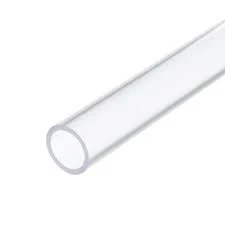Aug . 13, 2024 21:36 Back to list
Understanding the Benefits and Applications of CPVC Pipe Fittings for Plumbing Solutions
An Overview of CPVC Pipe Fittings
Chlorinated Polyvinyl Chloride, commonly known as CPVC, is a popular thermoplastic material used widely in various plumbing applications, including residential, commercial, and industrial settings. CPVC pipe fittings play a crucial role in ensuring a secure and efficient plumbing system, owing to their unique properties and advantages over other materials.
Understanding CPVC and Its Properties
CPVC is a modified form of PVC that includes chlorine atoms, which enhances its thermal and chemical resistance. This improvement makes CPVC suitable for hot water distribution systems, as it can withstand temperatures up to 200°F (93°C). Additionally, CPVC fittings are renowned for their corrosion resistance, making them an excellent choice for environments with aggressive chemicals. They are lightweight, easy to handle, and can be cut and joined without specialized tools, offering convenience during installation.
Benefits of CPVC Pipe Fittings
1. Durability One of the standout features of CPVC fittings is their durability. Unlike metal fixtures that can corrode over time, CPVC maintains its structural integrity in various conditions, ensuring longevity in plumbing systems.
2. Thermal Resistance As mentioned, CPVC can handle hot water applications better than standard PVC. This capacity allows for versatility in residential and industrial heating systems, preventing the degradation that might be experienced with less robust materials.
3. Ease of Installation CPVC fittings can be easily joined using solvent cement, which provides a strong bond. The lightweight nature of CPVC makes it easier to transport and install, reducing overall labor costs and installation time.
4. Cost-Effectiveness CPVC fittings are generally more affordable than their metal counterparts. They provide a cost-effective solution for plumbing systems without compromising quality or performance.
cpvc pipe fittings

5. Low Thermal Conductivity The low thermal conductivity of CPVC means that it does not transfer heat as easily as metal pipes. This property helps in maintaining the temperature of the hot water, thus enhancing energy efficiency.
Applications of CPVC Pipe Fittings
CPVC pipe fittings are utilized in a variety of applications. They are primarily used in residential plumbing for hot and cold water distribution systems. In commercial settings, CPVC is employed for heating systems, including radiant heat applications and chemical processing systems, where the chemical resistance of CPVC shines bright.
The fittings come in various shapes and sizes, including elbows, tees, couplings, and adapters, allowing for flexible configurations to meet different plumbing requirements. Their versatility makes them a go-to option for both new installations and repairs in older systems.
Environmental Considerations
As the world gradually shifts towards sustainability, the environmental impact of materials used in plumbing systems becomes crucial. CPVC fittings are produced with a lower carbon footprint compared to traditional metal fittings. They are also recyclable, supporting waste reduction efforts within the industry.
Conclusion
CPVC pipe fittings represent an essential component of modern plumbing systems, combining durability, thermal resistance, cost-effectiveness, and ease of installation. Whether you're a contractor looking to utilizeCPVC in your next project or a homeowner considering renovations, understanding the benefits and applications of CPVC fittings can lead to more informed choices. As technology advances and demands for energy-efficient and resilient materials continue to grow, CPVC is well-positioned to be a leading player in the plumbing market for years to come.
-
High-Quality PPR Pipes and Fittings Durable ERA PPR & PVC PPR Solutions
NewsJul.08,2025
-
Black HDPE Cutting Board - Durable, Non-Porous & Food Safe HDPE Plastic Cutting Board
NewsJul.08,2025
-
High-Quality CPVC Panel Durable HDPE & PVC Panels Supplier
NewsJul.08,2025
-
Double PE Welding Rod Supplier - High Strength, Durable & Versatile Welding Solutions
NewsJul.07,2025
-
High-Quality PVC-O Pipe Supplier Durable 75mm PVC Pipe & Connections Leading PVC Pipe Company
NewsJul.07,2025
-
HDPE Drainage Pipe Supplier – Durable & Corrosion-Resistant Solutions
NewsJul.06,2025

